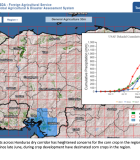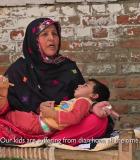Agricultural Innovation Project (AIP)
Agricultural Innovation Program (AIP) for Pakistan is working to sustainably increase agricultural productivity and incomes in the agricultural sector through the promotion and dissemination of modern technologies/practices in the livestock, horticulture (fruits and vegetables) and cereals (wheat, maize and rice) sector. Project management is vested in a unique c onsortium of CGIAR Centers and the Pakistan Agricultural Research Council (PARC), led by CIMMYT supported by the U.S. Agency for International Development. The project aims to foster emergence of a dynamic, responsive, and competitive system of science and innovation in Pakistan. AIP seeks to catalyze equitable growth in agricultural production, productivity, and value.
This unique project is rooted in the principles of Agricultural Research for Development, with particular emphasis on building partnerships between public research and those it serves, including farmers and the private sector; increasing investments; generating, sharing, and making use of agricultural knowledge for development; and demonstrating and building awareness of the development impacts and returns from agricultural innovation.
CIMMYT is the implementing organization; managing and taking overall responsibility for AIP and providing direct oversight of the agronomy, wheat, and maize commissioned projects within the cereals and cereal systems science window. Four international partners the International Livestock Research Institute; University of California Davis, The World Vegetable Center, and the International Rice Research Institute lead on commissioned projects in livestock, tree fruits, vegetables, and rice, respectively, while PARC serves as both the hosting partner and the lead on a province-inclusive competitive grants system. Combined, these organizations are CIMMYT’s “primary partners.”
Activity Description
AIP operates through three activity windows, namely: commissioned projects, a competitive grants system, and human resource development. Within these activity windows AIP addresses complex agricultural systems, but is divided into four “Science Windows’”– cereals and cereal systems, livestock, vegetables, and perennial horticulture. The key indicator of AIP’s success are the number of small farmers who adopt or benefit from productivity or value-enhancing technologies.
Expected Outcomes
• Introduce improved seed/planting materials (e.g. wheat, maize hybrids, vegetables, fruits, and rice)
• Introduce of innovative and climate-smart machinery (e.g. Happy Seeder, Two Wheel Tractor, Rice Harvester, Mung bean Harvester)
• Establish research boards to manage the small competitive grants activity
• Build long duration and short duration capacity programs including vocational training, field days, workshops and helping students earn graduate degrees




